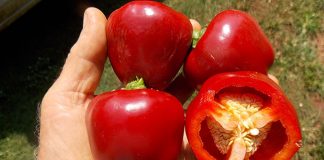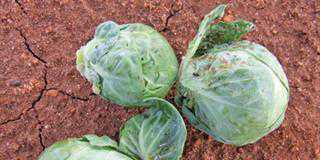With regard to basic fertilisation, many farmers are only concerned about what they put into their crop. They don’t consider what’s already in the soil and expect that each crop requires a set formula. This simply doesn’t work and can be a huge waste of money.
By asking what to apply for a specific crop implies that you think you’re planting into a medium without any fertility of its own. Or that you have to supply the nutrients a specific crop requires as if this differs radically from the needs of any other crop.
You need to get enough of each element into the soil and get them into balance (fertiliser companies can advise you on this). After that, use nitrogen to manage the crop’s growth.
With onions, in the early stages, you need just enough nitrogen to keep the colour of the leaves right. Putting down too much at this stage can be very wasteful, as the nitrate can leach into deeper layers with irrigation and rain and the root system still has to develop the capacity to reach fertiliser that’s leached deeper down.
Pay attention to the growth rate of the young plants. As mentioned previously, the bulb consists of swollen leaves. The better they grow, the more potential there is for a larger bulb and of course, a higher yield.
Set a stop watch when planting, as maturity will be at a set point determined by day length according to the variety, and it’s a race to develop as large a plant as possible in that period. All other factors affecting growth, such as water and weed competition, will also have to be addressed
Nothing is easy with onions
Don’t think that growing onions is easy and straightforward because you will end up with a failed crop.
Onions aren’t like cabbages, which respond to adequate nitrogen throughout the growing period up to maturity.
However, with excess nitrogen at the end of the growth cycle, onions may develop thick necks and delay maturity slightly. The trick with this crop is to get growth going as quickly as possible until the bulb starts forming.
At this stage, watch the leaf colour – up to this point it should have been a lush, deep green. From here on, aim for a medium green as the plant concentrates on bulb formation rather than leaf growth. This is easier said than done. Leaf growth isn’t a switch you can turn on and off and there may be still a lot of residual nitrogen in the soil from previous applications.
Experience plays an important role and few will get it 100% right the first time. It’s important to know about it so you can learn to judge the stage at which you should stop applying nitrogen or reduce your applications. A lack of nitrogen during the main growth phase will render the plants more vulnerable to disease, as would applying too much.
The correct use of nitrogen is one of the most important aspects of growing onions. Monitor this constantly so you can develop your eye and be able to control this factor. Not only will you be able to use expensive nitrogen efficiently, you’ll get the best results.
As for other elements, zinc is rather important. Since many fertilisers no longer contain zinc, monitor its levels in
your soil analysis and watch out for leaves that become bent or twisted with pale stripes and stunting. As with most deficiencies, the symptoms will be patchy rather than uniform across the land.
Ensure there’s enough potassium in the soil. This contributes to good quality bulbs and the plants’ general health.
Contact Bill Kerr on 016 366 0616 or email [email protected].
Caption:
Getting the nitrogen levels right plays an important part in producing onions with thin necks.
BILL KERR













